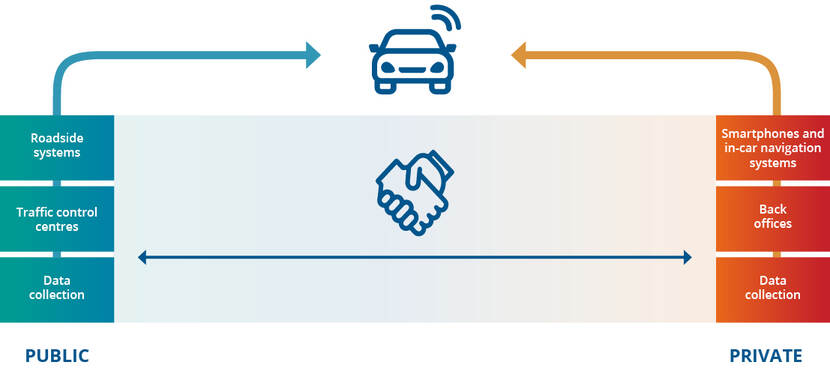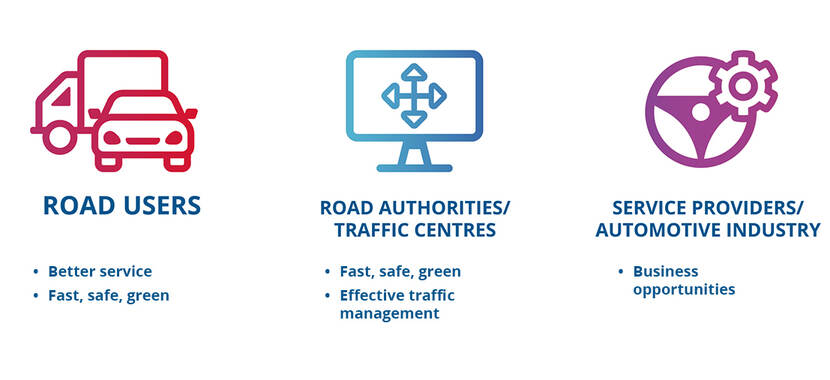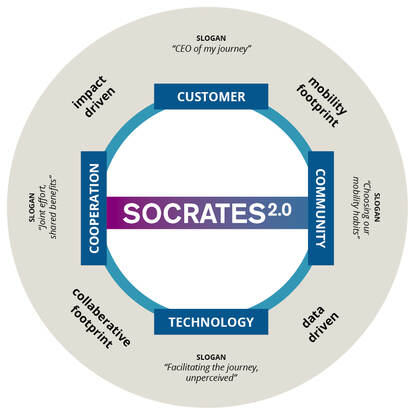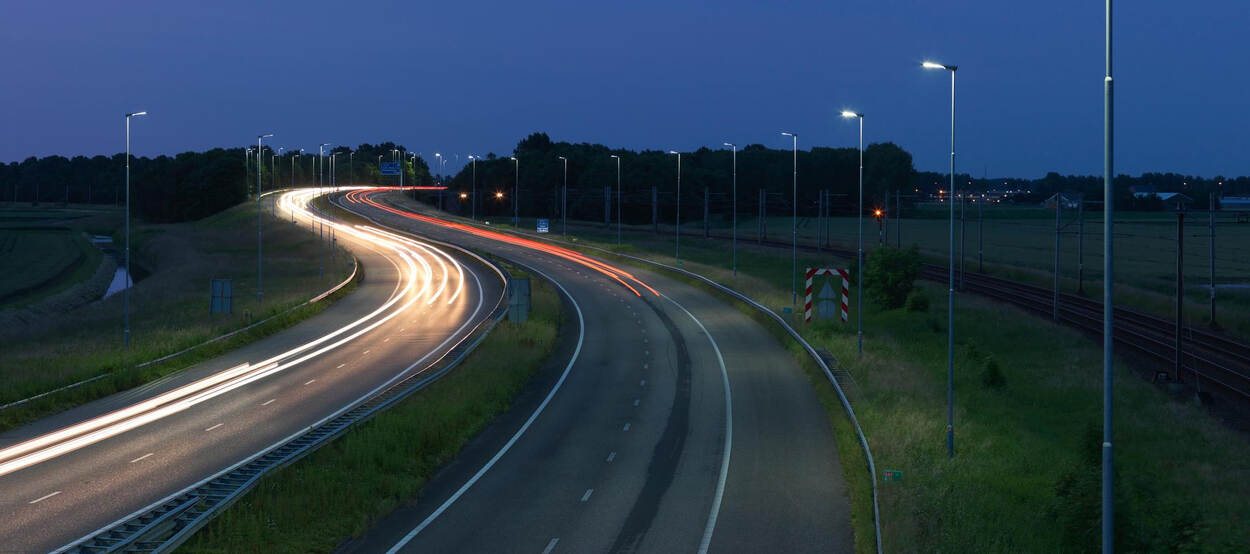Traffic information Services

Digitalisation has had a major effect on how we navigate through traffic to reach our destination. Road authorities have a long history of providing drivers with information on incidents and accidents via roadside systems. Over the years, these systems have become more and more advanced, leading to today’s elaborate traffic management services based on common goals and principles for the greater good.
In parallel, the use of mobile and in-car information and navigation services is rapidly expanding. These services have obvious benefits for individual road users. Turn-by-turn navigation, information on speed limits, road blocks and traffic jams. And, as the most appealing feature, a calculation of the fastest route to a driver’s destination. Features that also anticipate a future of cooperative, connected and automated mobility. A future where a driver is supported more and more by systems.
The “Nash equilibrium”
Traffic engineers have long assumed that the Nash equilibrium describes real-world rush hours pretty well: a situation where drivers choose the fastest route, even though taking a longer route would help spread out traffic and ease congestion. Nobody is motivated to make a different decision than the one they are making because that would leave that individual worse off, even if it would improve overall group welfare.
Sharing data, aligning services
However, drivers also experience inconsistencies between the different information sources. Advice on roadside signs does not always match or may even conflict with the navigation advice. Also, when the original route to a destination suddenly becomes clogged with traffic jams, suggested alternative routes are not always suitable.

Enabling a future of safer, smoother and greener road transport means embracing the obvious benefits of individual traffic information and navigation services while overcoming their limitations and unwanted effects. As a means of promoting this, the SOCRATES2.0 partners share data and introduce traffic management in information and navigation services, and use the navigation system to improve the network performance. This is called interactive traffic management or Traffic Management 2.0.
A win for all
This public–private cooperation is expected to lead to a win-win-win situation for all stakeholders in the traffic management ecosystem. A win for road users and communities who receive better services during a better-facilitated journey, a win for the traffic management centres that gain enhanced overview and insights and new methods to implement traffic management, and a win for service providers who deliver these new messages and can offer better end-user services resulting in new business opportunities.


CEO of my journey
The SOCRATES2.0 partners aim to establish something new, and not just improve an existing concept. The idea of influencing traffic has to be transformed into supporting people on their journey from A to B. As such, the vision not only focuses on technology or the traffic management process, but also on the customer, community and cooperation.
Imagetitle
SOCRATES 2.0
Smart route and navigation services bring real-time traffic information to drivers that matches the information on road signs. This way road users receive better support during their journey. Traffic flows better. And navigation companies offer a reliable service.
But this Win-Win-Win situation requires a lot of behind-the-scenes work. Public and private parties need to share and merge data at lightning speed so they can send advice and information back to road users in real time.
Because information about accidents, road works, environmental zones and detours via roadside systems do not always correspond with advice from navigation apps.
And at large events, smart navigation services can guide road users from their homes to the parking lot. But this requires every bit of current traffic and parking information.
Traffic jams can sometimes also be prevented or postponed by sending alternative route advice to a small portion of road users. This too means combining current traffic information with predictions and delivering this to drivers at lightning speed. And giving road users an incentive to take the alternative route.
Achieving these services – and raising traffic management to a new level – requires more interaction between the many parties involved: road authorities, ICT companies, traffic information and navigation service providers.
They need to make agreements about who supplies what data and when, and how to share competitively sensitive information. All technical aspects need to work too and comply with international standards.
The European SOCRATES2.0 partners teamed up to explore different ways of working together.
A cooperation framework was developed with three levels of cooperation in mind. The first level involves more and standardized data sharing. The second level sees partners providing their services from a shared traffic image. And at the third and highest level, partners coordinate their services. Four support functions were developed to facilitate the cooperation: a Strategy Table, a Network Monitor, a Network Manager and an Assessor.
The different cooperation models were piloted in four cities. In everyday traffic and with 9,000 participating road users.
And with success. SOCRATES2.0 has taught public and private parties how to work better together, providing the road user with smarter services for safer, smoother and more sustainable traffic flow.
Today, the SOCRATES2.0 partners are happy to present their journey on discovering how to shape public-private cooperation in a future of interactive traffic management.
Also available in our online SOCRATES2.0 Magazine. And we invite you to use our insights to take the next step in interactive traffic management yourself.
Endscreen
Socrates 2.0
Partners:
Bast, Bemobile, BMW, Brand MKRS, City of Copenhagen, Here, Map Traffic Management, Rijkswaterstaat, Technolution, TomTom, Vlaamse overheid, Connecting Europe Facility of the European Union
SOCRATES2.0: 'System Of Coordinated Roadside and Automotive services for Traffic Efficiency and Safety'
The SOCRATES2.0 project
In the SOCRATES2.0 project, the partners aim to learn how to best cooperate, share relevant data, work towards common interfaces and agree on principles and business models, while taking each other’s interests into account and deploying interactive traffic management. Four city regions welcomed the team and enabled real-life testing of the cooperation by deploying newly developed SOCRATES2.0 end-user services. Over 20,000 road users participated in the pilots by using and evaluating the services to find out what works and what doesn’t.
In this magazine, the SOCRATES2.0 partners are happy to present their journey on discovering how to shape public-private cooperation in a future of interactive traffic management.
Policy references and TM2.0
- Sustainable and Smart Mobility Strategy
- Cooperative, connected and automated mobility
- Traffic Management 2.0













